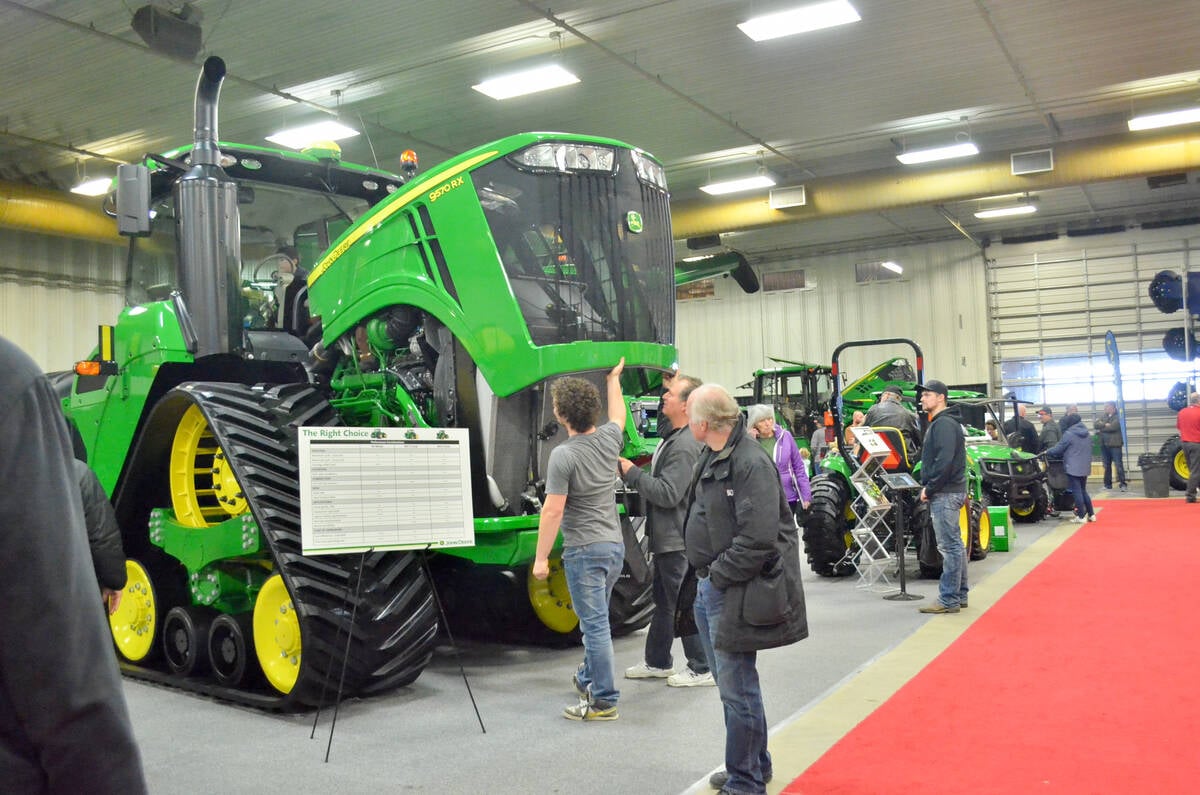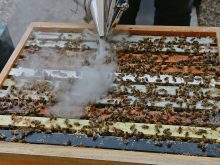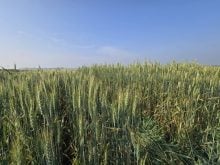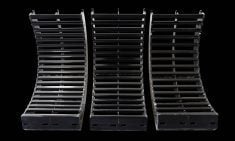Canadian farmers are looking forward to the day their battle against pests has a better air force, but government says they’ll have to bide their time before pesticide-spraying drones are an option.
Drones can be used in the United States if the product label covers aerial application and all other drone operation rules are followed, but Canadian regulation and legislation still has to catch up to advances in drone technology.
Why it matters: Farmers could face fines up to $10,000 if they use drones to spray pesticides.
Read Also

Manitoba Ag Days 2026 coming up fast
Canada’s largest indoor farm show, Manitoba Ag Days, returns to Brandon’s Keystone Centre Jan. 20-22, 2026. Here’s what to expect this year.
The hurdles haven’t discouraged interest in the technology, nor have they stopped some companies from selling drones while advertising them as the spray technology of the future.
Despite those marketing efforts, Manitoba Agriculture pesticide and minor use specialist Pratisara Bajracharya warned that there’s no legal way to apply crop protection products with a drone.
Drones in the skies today have moved past previous iterations of the technology. They’re less expensive and have more uses. They are commonly used on-farm for imaging. Microdrones can be fit with cameras and, although limited to the visual spectrum, can be used to scout crops or monitor livestock.
More advanced imaging data can feed into zoning maps and other precision agriculture applications.
“In more recent years, drones have become quite popular, and they have evolved quite a bit,” Bajracharya said. “In the present day, you can find drones with an improved capacity, so that has allowed pesticide application with drones in the Prairies to be a bit more realistic than in the past.”
Legal permission to take advantage of those advances is another question. Bajracharya suggested it may be awhile before regulations are in place.
Unravelling the red tape
Japan, China, South Korea and the U.S. have successfully used drones for pesticide application.
In Canada, the practice has to clear the Pest Control Products Act, which regulates the registration of pesticides nationally, and its administrative body, Health Canada’s Pest Management Regulatory Agency. It must also contend with provincial legislation, and rules are different in each province, Bajracharya noted.
The Pest Control Products Act states that using drones to apply pesticides is regulated and that, until there is more research to prove it is safe and effective and can be added to product labels, they cannot be used for that purpose. There are only two exceptions: mosquito larvicides VectoLex CG and VectoBac 200G are registered for drone use.
Provincially, Manitoba’s Pesticides and Fertilizers Control Act licenses commercial applicators such as aerial applicators, exterminators and ground application crews. The Environment Act has additional permitting requirements in place for pesticide applications, Bajracharya said.
“Wherever a pesticide is applied in a public setting where the public has access to these areas, additional permitting requirements come into play.”
Canada has extensive data requirements for pesticide registration. It involves rigorous crop tolerance, resident, toxicology and environmental studies before an active ingredient is registered and allowed to be sold.
In an email to the Co-operator, Health Canada said the PMRA does not yet have what it needs to complete drone-specific risk assessments on pesticide active ingredients. Until the organization receives this information and assesses it, drones will not be included on a pesticide label.
Drones pose a unique challenge to the typical PMRA cycle of product assessment, registration and re-evaluation, Bajracharya said.
“They didn’t always exist, so they are a new technology that is only being introduced right now.”
The products that people want to apply are already registered, but with a different mode of delivery in mind. Each product will thus require its own dataset specific to drones in order to prove the technology meets Health Canada’s standards.
Even if a product is used for traditional aerial application, drones operate differently, Bajracharya noted. The difference in water volume between traditional aerial spraying and drone spraying, for example, needs further study.
“There is no clear path forward, just because we don’t have the data,” she said.
Illegal spraying
Producers might be forgiven if they miss that message, given how often the promises of drone spraying come up in conversation and at farm shows.
Markus Weber, president of Alberta-based LandView Drones, said there are new drone vendors in the market that actively advertise their products within Canada for the purpose of spraying pesticides. He believes that’s misleading to customers.
“They’re telling farmers that it’s legal to use on their farm for pest control, that they can apply the products that they could otherwise apply, by drones,” he said. “And a lot of farmers are buying it without knowing that what they’re doing is illegal.”
It’s not just the risk of PMRA enforcement that those producers need to worry about, Weber said. There’s also the risk that the chemical companies that produce the pesticides won’t stand behind their products if they are drone applied.
Weber said he makes sure farmers who buy his company’s drones are aware of the legal landscape before the sale, but he suspects some will choose to use them for pesticides.
The average farmer on his own land is less likely to attract the regulatory agency’s attention, he noted. The bigger risk would be taken by anyone advertising drone spraying services.
“I make sure that people go in with their eyes wide open, but it’s going to be very hard to enforce those rules on-farm. If the same product can be applied by aircraft, by a backpack sprayer or by ground rate, but it can’t be applied by drone, that is going to be a difficult enforcement action,” Weber said.
David Koop is chief operating officer at Green Aero Technology Inc., a company that sells drones throughout Canada for agricultural purposes such as mapping and surveillance. He said many of his customers use drones for above-board tasks such as reseeding canola or field surveillance.
“We are having guys for sure that are finding legal uses for it, but the fact that we don’t have things on paper from the PMRA is absolutely hampering the industry for the adaptation and efficacy of the technology,” he said.
It puts Canadian farmers at a disadvantage to their American counterparts, Koop argued.
“It’s tough for the farmers, because you look south of the border and guys have been using these drones for two to three years now.”
Green Aero Tech’s website claims drones are “the future of spraying” and advertises that its products are capable of spraying up to 40 acres per hour, do a full and partial field spray and can fertilize and seed. The website offers no further information on the legal status of spray operations in Canada.
But Koop says he ensures that customers who buy their drones are fully aware of the rules surrounding the equipment’s use, including those from PMRA and from Transport Canada regarding drone operation. Green Aero Tech also offers training courses for flying drones and using them for mapping.
“We go through all the legal regulations, all the stuff you need to know,” he said.
Andrew Kippen of North Valley Precision Planting, a dealer for Green Aero Tech in southern Manitoba, said there’s keen interest from farmers about drones, and some have been bought.
He’s heard of producers using them for granular spreading or spraying cattle for flies.
“A lot of guys are curious about what we can spray and what we can’t spray, so I’ll get this out right there now: There’s nothing we can spray,” he warned.
Doing so is a risk for the farmer.
Moving ahead
Weber hopes a shift is coming, when the needed research is done and drone spraying gets the green light, but he’s not holding his breath.
“There is no official word that anything is changing, nor are there even rumours. I think there is no option but to find a different way once there are hundreds of people doing this.”
Koop is also hopeful, but worries that producers will lose patience with government agencies before the red tape is untangled.
“If you just drag your feet for too long on not regulating, guys are just going to ignore it completely. They’re just going to do what they want,” he said.
















